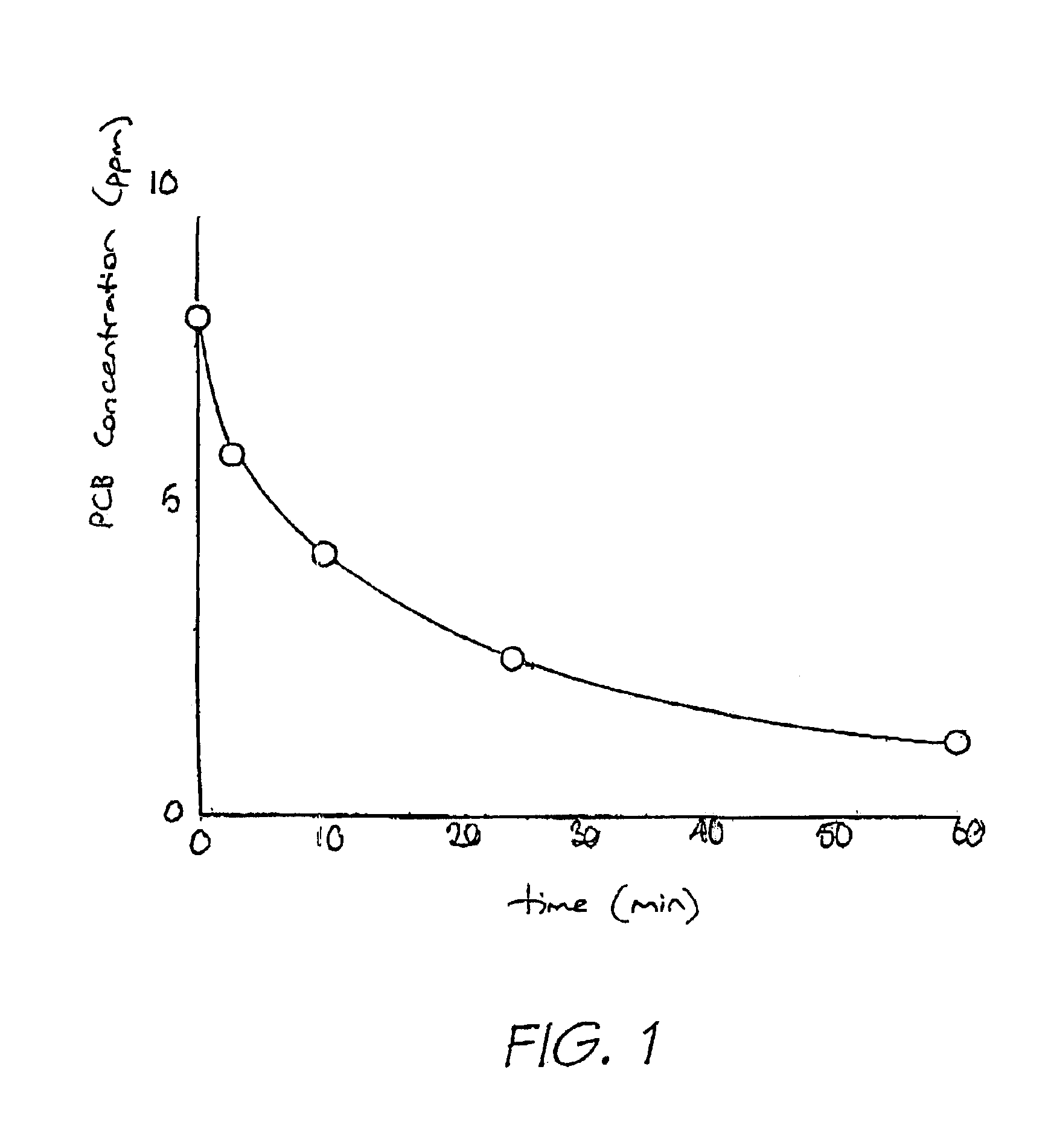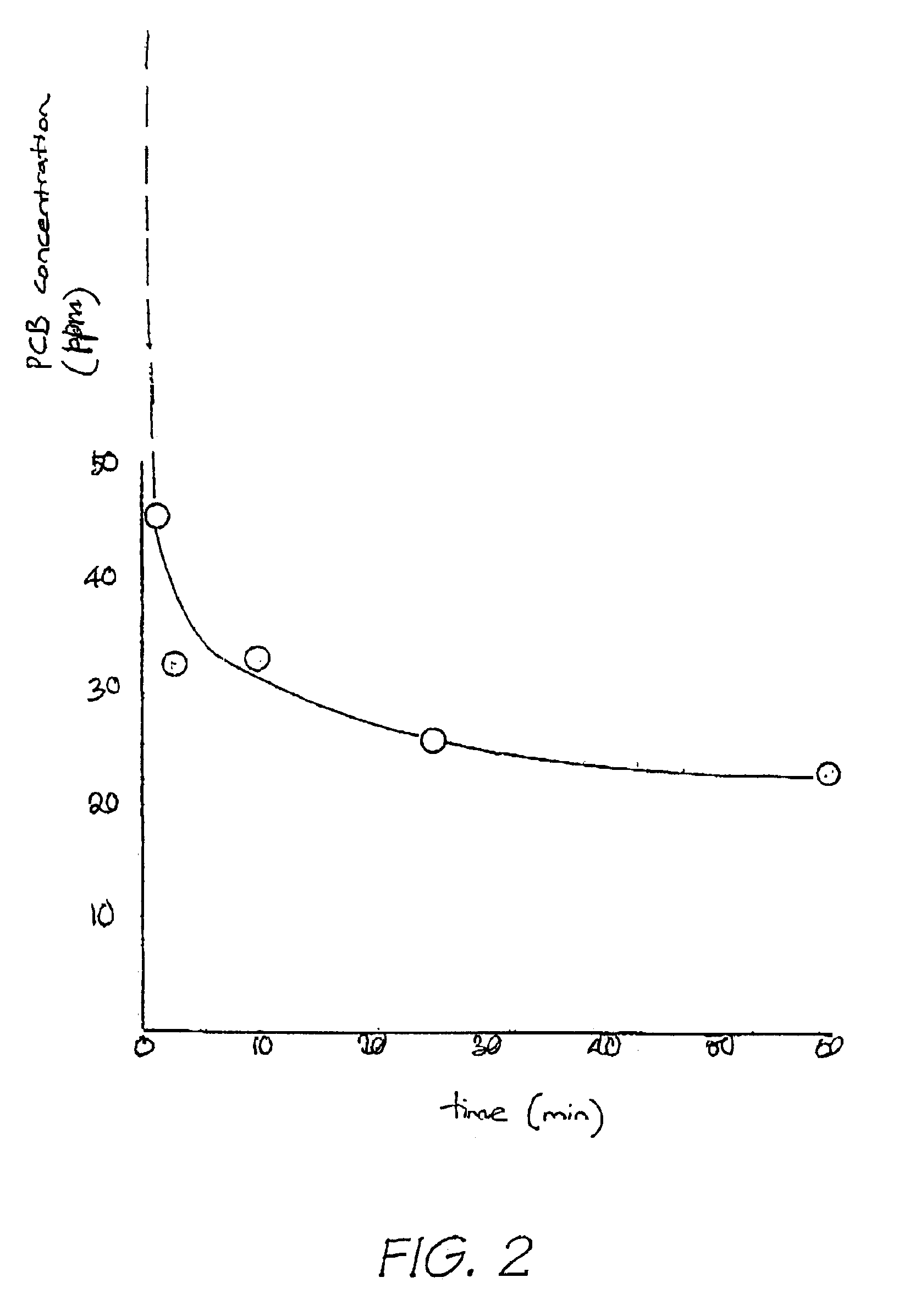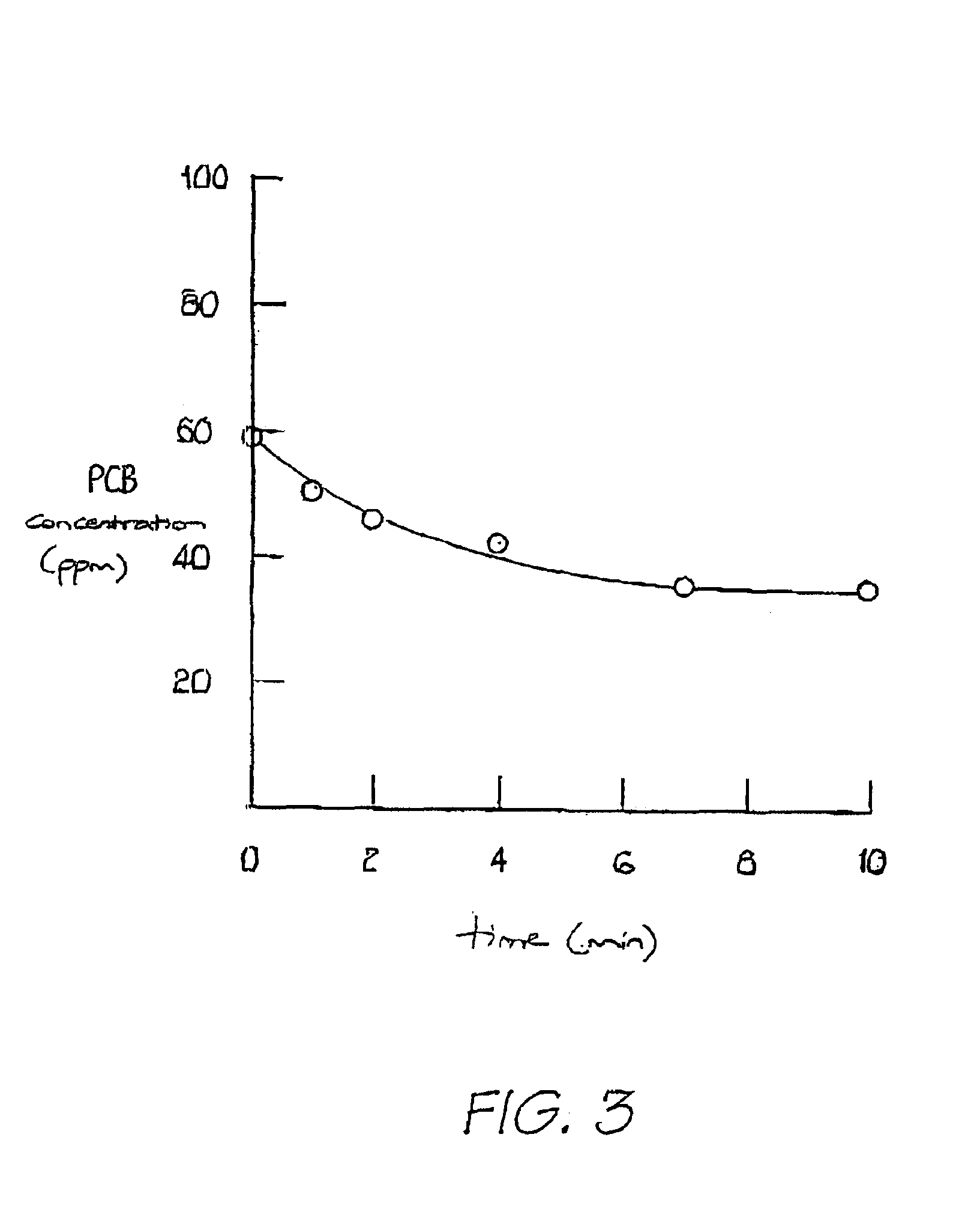Process for treating a solid-liquid mixture
a solid-liquid mixture and treatment technology, applied in the direction of physical/chemical process catalysts, separation processes, sludge treatment by oxidation, etc., can solve the problems of increasing the incidence of rashes, liver ailments and headaches, and entering the human food chain, so as to increase the exposure of the mixture to cavitation
- Summary
- Abstract
- Description
- Claims
- Application Information
AI Technical Summary
Benefits of technology
Problems solved by technology
Method used
Image
Examples
experimental examples
[0041]The following experimental, examples show the reduction of adsorbed PCB concentrations on solid particles following ultrasonic treatment in an aqueous pulp.
[0042]Calcium carbonate and silica (sand) solids were mixed separately with a PCB compound which had been separately dissolved in acetone to form a solution. The PCB compound selected was available under the trade name ARACLOR 1260. The mixture was then evaporated to dryness and the PCB then became surface adsorbed onto the solids. A 100 g quantity of these solids and an equivalent weight of water were then agitated to produce an aqueous slurry batches of which were experimentally subjected to ultrasound at a frequency of 20 kHz and a power input of 170 W. The residual PCB remaining on the solids as a function of time was measured by gas chromatography.
[0043]FIG. 1 depicts the reduction in measured PCB on silica solids following extended periods of sonication up to 60 minutes. The initial concentration of PCB was around 8 p...
PUM
| Property | Measurement | Unit |
|---|---|---|
| Temperature | aaaaa | aaaaa |
| Exposure limit | aaaaa | aaaaa |
| Cavitation enthalpy | aaaaa | aaaaa |
Abstract
Description
Claims
Application Information
 Login to View More
Login to View More - R&D
- Intellectual Property
- Life Sciences
- Materials
- Tech Scout
- Unparalleled Data Quality
- Higher Quality Content
- 60% Fewer Hallucinations
Browse by: Latest US Patents, China's latest patents, Technical Efficacy Thesaurus, Application Domain, Technology Topic, Popular Technical Reports.
© 2025 PatSnap. All rights reserved.Legal|Privacy policy|Modern Slavery Act Transparency Statement|Sitemap|About US| Contact US: help@patsnap.com



